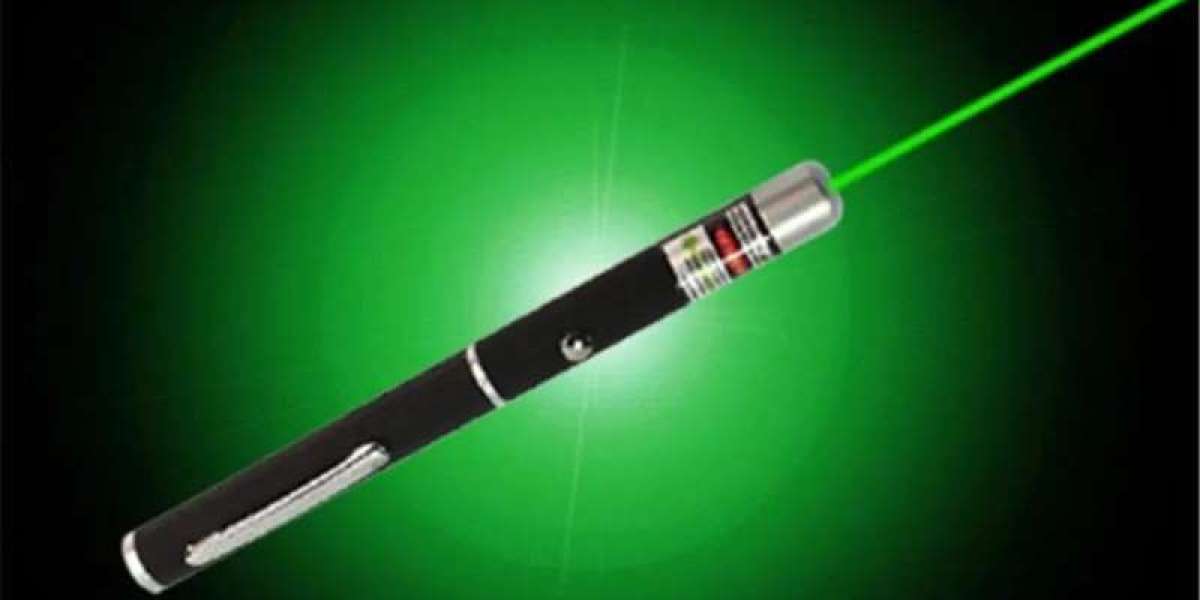A laser pen, also known as a laser pointer, is a handheld device that emits a concentrated beam of visible light, typically in red, green, or blue. Originally developed for use in presentations, laser pens have expanded into various fields, including astronomy, construction, education, and even entertainment. Their compact size, ease of use, and precision make them popular tools — but they also require responsible usage due to potential safety risks, especially at higher power levels.
How Does a Laser Pen Work?
A laser pen contains a laser diode that generates light at a specific wavelength. When powered by batteries, the diode emits a narrow, intense beam of light that remains focused over long distances. Some models also include lenses or filters to control the shape, intensity, or color of the beam.
Laser pens are typically categorized by their power output, measured in milliwatts (mW):
Class 1 and 2 (<1 mW): Generally safe for everyday use.
Class 3R/3A (1–5 mW): Used in classrooms or small presentations; can be dangerous if pointed directly into the eyes.
Class 3B and 4 (>5 mW): Higher power, suitable for professional applications; can cause eye damage and skin burns.
Common Uses of Laser Pens
Presentations and Education
Laser pens are widely used by teachers, professors, and professionals during lectures and business presentations to highlight points on screens or boards.
Their precise pointing ability makes them a valuable visual aid in large rooms or auditoriums.
Astronomy
Green laser pens are often used by astronomers to point out stars, constellations, or satellites in the night sky.
Due to their visibility over long distances, they are ideal for guiding others during stargazing sessions.
Construction and Alignment
Some construction professionals use laser pens for rough alignment or to point at distant targets during site surveys.
However, more advanced laser levels are typically used for actual measurements.
Entertainment and Recreation
Laser pens are sometimes used in light shows or for playing with pets, especially cats, who often chase the beam.
However, caution must be used to avoid shining the beam into a pet’s eyes.
Military and Tactical Use
In defense or law enforcement, high-power laser pens can be used as target indicators or distraction devices in tactical operations.
Safety Considerations
Despite their usefulness, laser pens must be handled with care:
Avoid Direct Eye Exposure: Even brief exposure can cause permanent eye injury, especially with high-power lasers.
Don’t Aim at Vehicles or Aircraft: Pointing a laser at moving vehicles or airplanes is illegal in many countries and can result in serious penalties.
Supervise Children: Laser pens should not be used as toys. Children should only handle low-power lasers under adult supervision.
Check Legality: Some high-powered laser pens are restricted or banned in certain countries due to safety concerns.
Conclusion
Laser pens are versatile, effective tools with applications ranging from classrooms and boardrooms to telescopes and construction sites. While they offer convenience and precision, it's important to use them responsibly. Understanding their classification, intended use, and safety guidelines ensures that laser pens remain helpful tools rather than potential hazards. Always choose the appropriate power level for your application and follow local regulations to use laser pens safely and effectively.



